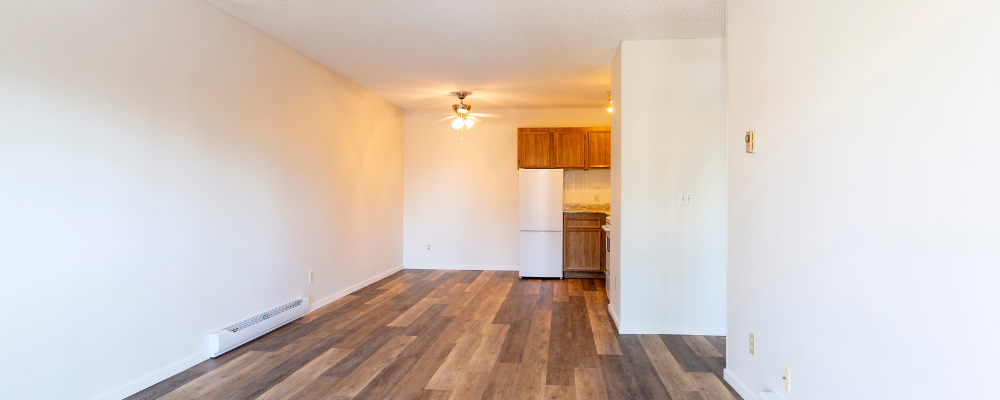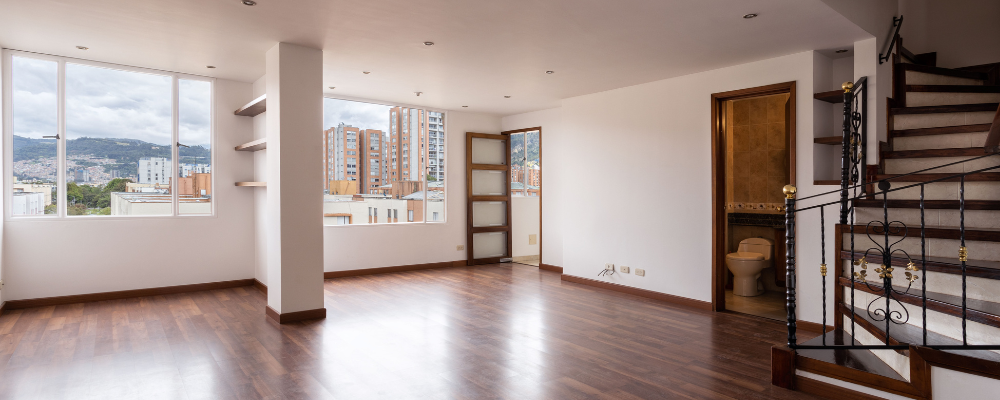A quick overview
Browse through our investor guide to rental vacancy rates by state, and learn about why these rates are important for real estate investors who are considering or have already bought property in these areas.
Table of Contents
For real estate investors who are purchasing rental properties, the vacancy rate is a crucial element to determining the success of the property as an investment. The vacancy rate of a property indicates the amount of time that the property is left vacant, as a percentage, usually over the period of 1 year. The vacancy rate of a property is impacted by:
- Rent price: If the rent price is higher than the market average, it can be more difficult to find tenants and the vacancy rate will be higher.
- Repairs and renovations: Any updates and repairs being done to the property between tenants will impact the vacancy rate and drive it up if the property has been left without occupants during the renovation period.
- Location becomes undesirable: A location that is no longer popular is a one-way ticket to higher tenant turnover and higher vacancy rates as landlords can struggle to find tenants.
Now that you know why vacancy rates are so important, let’s delve a little deeper into the rental vacancy rates by state, so that you can work out what a high or low vacancy rate is, when you’re looking at rental properties.

Rental vacancy rates by state
In the US, vacancy rates vary from state to state, largely based on the real estate market in each area. According to the US Census Bureau, these are the rental vacancy rates across the country in the first quarter of 2022:
Rental Vacancy Rates
| State | Rental Vacancy Rate |
|---|---|
| Alabama | 6.9 |
| Alaska | 5.1 |
| Arizona | 6.0 |
| Arkansas | 7.5 |
| California | 3.8 |
| Colorado | 3.4 |
| Connecticut | 4.7 |
| Delaware | 3.3 |
| District of Columbia | 8.3 |
| Florida | 6.6 |
| Georgia | 7.6 |
| Hawaii | 6.1 |
| Idaho | 3.3 |
| Illinois | 6.4 |
| Indiana | 8.7 |
| Iowa | 8.3 |
| Kansas | 8.8 |
| Kentucky | 5.6 |
| Louisiana | 5.1 |
| Maine | 6.1 |
| Maryland | 7.6 |
| Massachusetts | 2.8 |
| Michigan | 4.2 |
| Minesota | 6.7 |
| Mississippi | 7.7 |
| Missouri | 3.7 |
| Montana | 3.4 |
| Nebraska | 5.6 |
| Nevada | 7.5 |
| New Hampshire | 5.3 |
| New Jersey | 4.0 |
| New Mexico | 5.4 |
| New York | 5.1 |
| North Carolina | 6.2 |
| North Dakota | 13.6 |
| Ohio | 4.6 |
| Oklahoma | 8.5 |
| Oregon | 6.2 |
| Pennsylvania | 6.5 |
| Rhode Island | 5.2 |
| South Carolina | 12.9 |
| South Dakota | 5.4 |
| Tennessee | 6.0 |
| Texas | 7.7 |
| Utah | 5.0 |
| Vermont | 2.5 |
| Virginia | 5.3 |
| Washington | 4.9 |
| West Virginia | 8.0 |
| Wisconsin | 4.9 |
| Wyoming | 9.2 |
These statistics indicate a few trends that divide the country into regions where rental vacancies are performing quite differently. According to Statista, last year the vacancy rate of properties in the South region of the country were the highest with a total of 6.9%. While those in the Midwest followed next, then the Northeast and the West.
This is largely owing to the fact that the South and the Midwest have a declining population and the opposite is true for the Northeast and the West. A decline in population leads to a decline in the demand for housing and therefore higher vacancy rates, while an increase in population naturally leads to the opposite effect.
In the first quarter of this year, the South remained the highest, at 7.1% vacancy rate, with the Midwest following at 5.9%, the Northeast up next at 4.9% and the West at 4.5%. These statistics also show that renters who had initially moved out of the city centers, as a result of the pandemic, may be returning now.
Lowest rental vacancy rates in the US
The top 10 places with the lowest rental vacancy rates in the US are:
Lowest Rental Vacancy Rates
| State | Rental Vacancy Rate |
|---|---|
| Vermont | 2.5 |
| Massachusetts | 2.8 |
| Delaware | 3.3 |
| Idaho | 3.3 |
| Colorado | 3.4 |
| Montana | 3.4 |
| Missouri | 3.7 |
| California | 3.8 |
| New Jersey | 4.0 |
| Michigan | 4.2 |
Vermont has the lowest vacancy rate in the US, at 2.5% for the first quarter of 2022. According to iProperty Management, Vermont’s rental vacancy rate is a whopping 51.8% lower than the national average, and the state’s rental vacancy rate has declined by 40% since 2015.
Massachusetts is the next lowest rate, it’s also much lower than the national average, and has decreased by 19% since 2015. 38% of households in this region are renting, according to iProperty Management and year-on-year the rental vacancy rate is quickly declining here.
Delware and Idaho tie for the third lowest vacancy rate in the country, both lower than the national average. Since 2015, iProperty Management states that Delware’s rental vacancy rate has decline by 14.1% and Idaho’s by 17.2%. Boise itself has a rental vacancy rate of just 1.5%, and the Wilmington-Camden-Philadelphia has a rate of 4.7%.
While the largest cities saw a rise in the rate of vacancies throughout the pandemic, thanks to the shift many people made into more affordable areas, some of these cities are seeing an influx of renters again, which is indicative of the change in trend as the pandemic-effects wear off.
Highest rental vacancy rates in the US
The top 10 places with the highest rental vacancy rates in the US are:
Highest Rental Vacancy Rates
| State | Rental Vacancy Rate |
|---|---|
| North Dakota | 13.6 |
| South Carolina | 12.9 |
| Wyoming | 9.2 |
| Kansas | 8.8 |
| Indiana | 8.7 |
| Oklahoma | 8.5 |
| District of Columbia | 8.3 |
| Iowa | 8.3 |
| West Virginia | 8.0 |
| Mississippi | 7.7 |
The highest rental vacancy rate belongs to North Dakota which, according to iProperty Management, has risen by 33.3% since 2015 and continues to rise. 36% of households in North Dakota are renting and similarly to many other markets, the real estate market in this area was hit hard by the pandemic which is why the rental vacancy rates are sitting at the top of the pile.
The second highest rental vacancy rate is South Carolina, where over 50% of people would prefer to rent. South Carolina’s rental vacancy rate is higher than the national average, and the area is seeing an increase in population which should help the vacancy rate in the future. However, this year the housing market in the area is struggling as supply wanes to a historic low.
Average rental vacancy rate in the US

According to the US Census Bureau the average rental vacancy rate for the country in the first quarter of 2022 was 5.8% which is significantly lower than the 6.8% rental vacancy rate in 2021. iProperty Management statistics show that 41.4% of these vacant units have been empty for a maximum of 2 months. The national vacancy rate has also fallen by 13.9% over the last year, and the vast majority of vacant properties are multi-family units. It’s been determined that units which were constructed after the year 2010 are more likely to be vacant. Overall, however, the national rental vacancy rate is declining slowly over the last decade and continues to do so.
What is a good vacancy rate for rental property?
Most investors would love to have a zero-vacancy rate, but this is just not realistic as tenants come and go, evictions sometimes need to happen, and upgrades are a necessary part of owning a property. Having said that, a good rule of thumb for vacancy rates is to aim for a property with a rate below 5%. Generally, properties with a vacancy rate over 8% will need to be looked at, to determine why the rate is higher and what can be done about it.
How can you decrease the vacancy rate of your investment property?

If your investment property is vacant more often than you’d like, there are a number of considerations you can factor in, to decrease it.
- Rent price: Your first consideration should be the price of the rental unit. Research your area and the rental prices in it and see how your rent price compares to others in the area. A rental price that is too high will not attract as many tenants, and the ones that you get may not last long.
- Repairs and renovations: Make sure that any necessary repairs are done to the unit and, if need be, do some renovations to it as well to ensure that tenants are comfortable and living in an up-to-date home.
- Offer incentives: Attracting tenants is easier when you have some incentives to offer them. These can come in the form of paying a tenant’s utilities, giving parking benefits and so on. These incentives will be worth your while when it comes to finding and keeping stable tenants.
- Form relationships: Get to know your tenants so that you can form a mutually beneficial relationship with them which will come in handy as time goes by.
The bottom line
Vacancy rates are good indicator of which rental properties real estate investors should buy, however your decision doesn’t need to be solely based on this and it is one of many factors that should be taken into account. For those who are looking to lower their vacancy rate, try different strategies to see which will stick, sometimes different techniques work for different areas. All in all, vacancy rates should be kept as low as possible, for an investment property to be as profitable as it can be.

